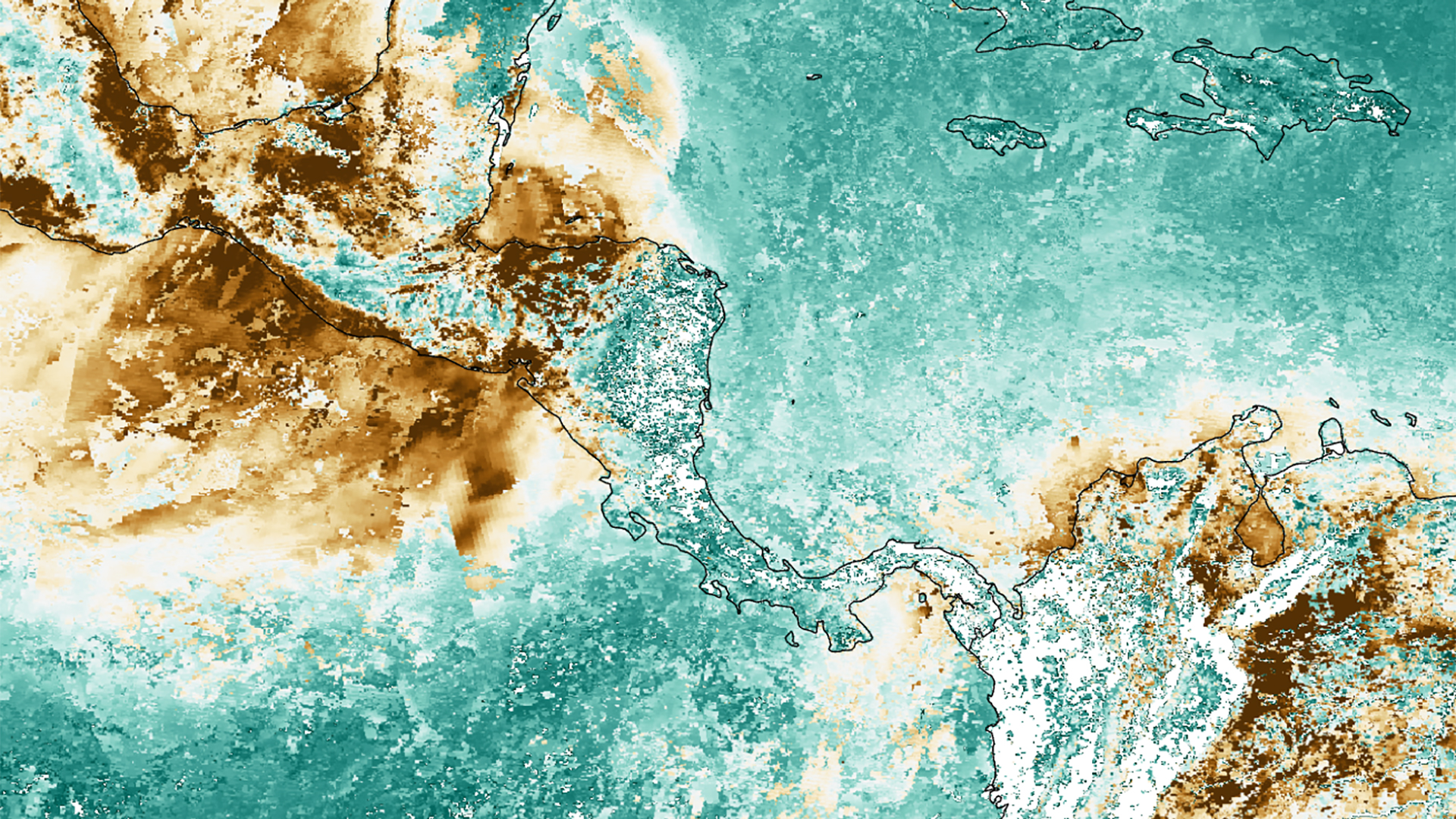
Identifying Particulate Matter and Aerosols in Central America Using NASA Remote Sensing Data
Aerosols, fine particulate matter expelled into the atmosphere, have become a major concern due to associated negative health impacts. Aerosols are commonly created by anthropogenic activities such as biomass and fossil fuel burnings, pyrotechnics, vehicle congestion, and mining operations, or by natural sources such as dust and salt particles. These contributors often release aerosols with a diameter of 2.5μm or less (PM2.5) that degrade air quality, put populations at risk of adverse health effects, and can cause severe environmental problems. To assist policy makers in developing scientifically-based solutions to identify social and environmental issues relating to these aerosols, the Central America Health & Air Quality team partnered with organizations from El Salvador (Ministerio de Medio Ambiente y Recursos Naturales (MARN)), Guatemala (MARN), and Panama (Universidad Technologica de Panama, La Universidad Autonoma de Ciriqui, and Instituto Especializado de Analisis de la Universidad de Panama). Research was conducted using in situ PM2.5 data obtained from end users alongside NASA Earth observations, including Aqua and Terra Moderate Resolution Imaging Spectroradiometer (MODIS), Suomi National Polar-orbiting Partnership Visible Infrared Imaging Radiometer Suite (VIIRS), and CALIPSO Cloud-Aerosol Lidar with Orthogonal Polarization (CALIOP). The largest concentration of aerosols from 2008 – 2019 occurred during the transition from dry to wet season, particularly in the months of April and May. Data analysis identified associations between AOD and PM2.5 levels, fire events, and related health risks. Results indicate a significant correlation between AOD and PM2.5 for all three nations (P-value < 0.05), aerosols were positively correlated with increased fire occurrence, and a relationship was observed between AOD levels and the occurrence of health effects that are commonly associated with the presence of PM2.5.
- Location
- Virginia — Langley
- Term
- Fall 2019
- Partner(s)
- Ministerio de Medio Ambiente y Recursos Naturales (MARN) (El Salvador)
Ministerio de Medio Ambinente y Recursos Naturales (MARN) (Guatemala)
Universidad Technologica de Panama
La Universidad Autonoma de Ciriqui
Instituto Especializado de Analisis de la Universidad de Panama - NASA Earth Observations
- Aqua MODIS
Terra MODIS
Suomi NPP VIIRS
CALIPSO CALIOP - Team
- Alejandro Soria (Project Lead)
Kaitlyn Bretz
Giancarlo DeMarco
Jay Oliver - Advisor(s)
- Dr. Kenton Ross (NASA Langley Research Center)
Dr. Travis Toth (NASA Langley Research Center)
Carlos Alberto Gonzalez (Representative of la Comisión Centroamerica de Ambiente y Desarollo (CCAD)